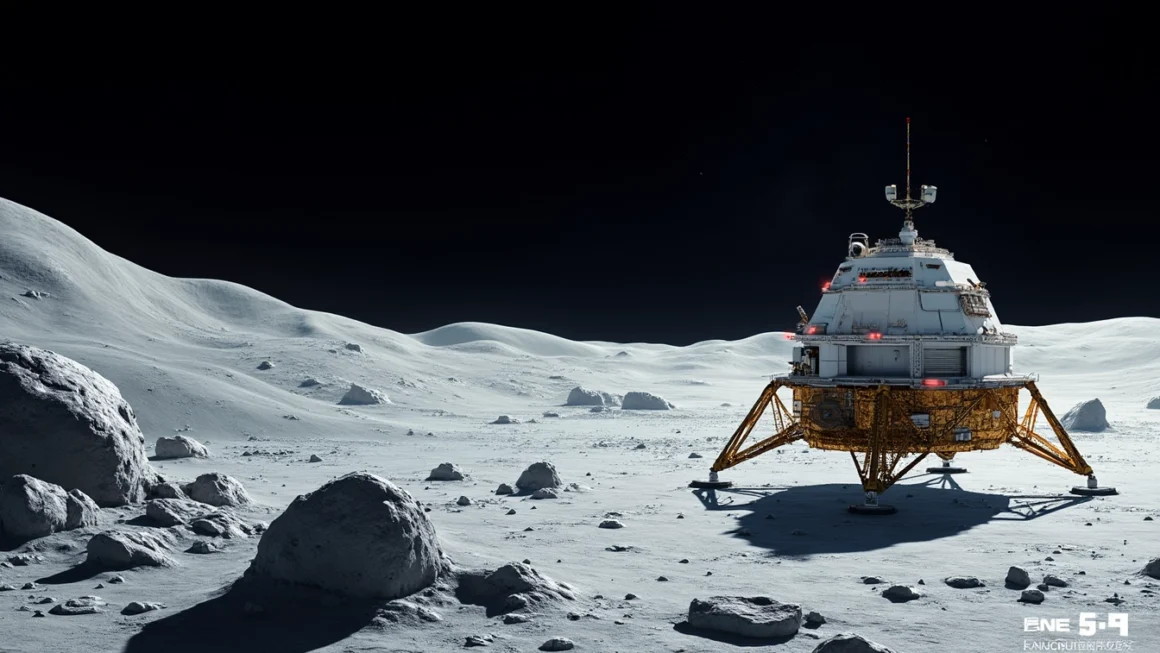In a groundbreaking discovery, scientists have unveiled new insights into the Moon’s ancient volcanic activity, thanks to samples obtained by China’s Chang’e-5 spacecraft. This mission, which marked China’s first-ever collection of lunar materials, has provided compelling evidence of volcanic eruptions on the Moon as recently as 2 billion years ago.
The Significance of the Chang’e-5 Mission
Table of Contents
The Chang’e-5 mission, launched in 2020, successfully retrieved about 4 pounds (1.8 kg) of lunar material from a previously unexplored area. This region, known as Oceanus Procellarum or the “Ocean of Storms,” has long intrigued scientists due to its unique geological features.
Unveiling the Moon’s Volcanic History
Analysis of these samples has revealed fascinating details about the Moon’s volcanic past:
Recent Volcanic Activity
The most striking finding is evidence of volcanic eruptions occurring as recently as 2 billion years ago. This is significantly more recent than previously thought, challenging our understanding of the Moon’s thermal evolution.
Composition of Lunar Basalts
The samples contain lunar basalts, igneous rocks formed from cooled lava. These basalts provide crucial information about the Moon’s internal composition and thermal history.
Implications for Lunar Science
This discovery has several important implications for our understanding of the Moon:
- It suggests that the Moon remained volcanically active for a longer period than previously believed.
- The findings may require a reassessment of models explaining the Moon’s thermal evolution.
- It opens up new questions about the mechanisms that allowed for such recent volcanic activity.
The Role of Technology in Lunar Exploration
The success of the Chang’e-5 mission highlights the crucial role of advanced technology in space exploration. Automated sample return missions like this one are pushing the boundaries of our knowledge about celestial bodies. Automation technologies are increasingly vital in processing and analyzing the vast amounts of data generated by such missions.
Future Prospects for Lunar Research
This discovery opens up exciting new avenues for lunar research:
Further Sample Analysis
Scientists will continue to analyze the Chang’e-5 samples, potentially uncovering more secrets about the Moon’s geological history.
Targeted Future Missions
Future lunar missions may now be designed to specifically investigate areas of potential recent volcanic activity.
Implications for Lunar Habitation
Understanding the Moon’s volcanic history is crucial for potential future lunar habitation plans, as it affects our understanding of resource availability and geological stability.
The Global Effort in Space Exploration
The Chang’e-5 mission and its findings underscore the importance of international collaboration in space exploration. As different nations contribute their technological expertise and resources, our collective understanding of the solar system expands.
Conclusion
The discovery of recent volcanic activity on the Moon, as evidenced by the Chang’e-5 samples, marks a significant milestone in lunar science. It not only challenges our existing models of the Moon’s evolution but also paves the way for exciting new research directions. As we continue to explore and understand our celestial neighbor, each discovery brings us closer to unraveling the mysteries of our solar system’s history and potentially our own planet’s past.
This breakthrough serves as a testament to the power of perseverance in scientific exploration and the invaluable role of space missions in expanding our cosmic knowledge. As we look to the future, the Moon continues to be a fascinating subject of study, holding secrets that could unlock our understanding of planetary formation and evolution in the broader context of our universe.




